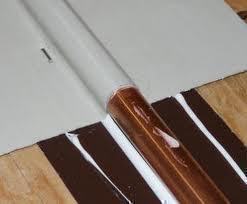Galvanic Corrosion
Galvanic corrosion occurs when two dissimilar alloys or metals come in contact with each other in a corrosive, conducting environment. When they touch, the anode metal corrodes faster than it would when submersed in the solution and the cathode metal corrodes much slower. Galvanic corrosion is not considered a bad quality, however, as the concept is commonly used in industry to protect more expensive metals by allowing less expensive ones to serve as anodes and be worn down instead.
Why does Galvanic Corrosion Occur?
When an electrolyte exists between two dissimilar metals, it permits a conductive path to be formed that passes an ion from the anode metal to the cathode. This makes the anode more susceptible to rust and protects the cathode. The current density between the two metals increases as the surface area of the anode decreases. This leads to greater corrosion and can result in undesired cathode metal corrosion if left unchecked. This effect can also occur on a single metal type when the electrolyte becomes concentrated on one area of the immersed metal.
How to Prevent Galvanic Corrosion
A number of methods have been used to prevent galvanic corrosion. First, two metals can be electrically insulated from each other to prevent the galvanic coupling from being setup. Grease or plastic insulation can be used to achieve this effect. However, the metals cannot come into electrical contact to avoid the effect. Another method is to keep the metals dry or shielded from ionic compounds by painting or encasing the metals in a protective epoxy. Also, similar metals that have closely matched individual potentials can be chosen in order to reduce the amount of galvanic current generated. Using the same metal reduces the potential for galvanic corrosion by a significant amount.


Comments - No Responses to “Galvanic Corrosion”
Sorry but comments are closed at this time.